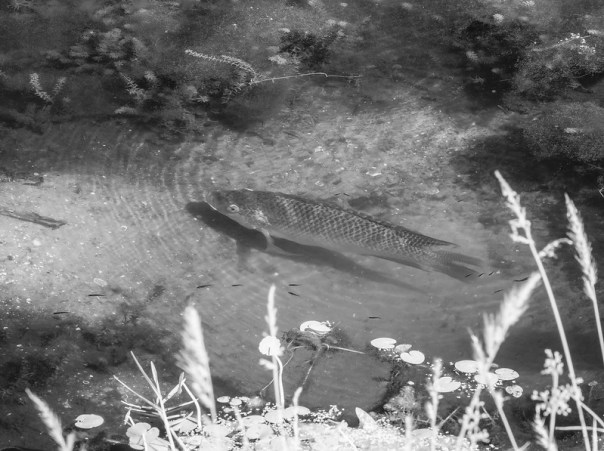It’s begun: We’re finally leaving the hot weather behind here in Central Florida. Cooler temperatures and lower humidity (and fewer biting insects!) make outside activities even more pleasant. Birds / wildlife enjoy this weather too: There’s more for us to see as migrant species pass through or stop by for the winter
Here are some photos I made last Wednesday in Merritt Island National Wildlife Refuge. I went first to Black Point Wildlife Drive. I got there a little too early so there wasn’t much activity yet. The calm reflections in one of the still ponds along the way was attractive, though:
 A peaceful, easy morning
A peaceful, easy morningI decided to make another pass around Black Point. I’m glad I did. There was more going on the second time through. I spotted these some I haven’t seen in a while:
 Northern Shoveler (migrant)
Northern Shoveler (migrant) Savannah Sparrow (migrant)
Savannah Sparrow (migrant) Black-crowned Night-Heron (year round)
Black-crowned Night-Heron (year round)Belted Kingfishers reappeared starting a month or so ago, but this is the first halfway decent photo I’ve managed to get. As usual, this one flew off as soon as I raised my camera. I just sat still waiting and it returned a few minutes later.
 Belted Kingfisher (migrant)
Belted Kingfisher (migrant)I’ve been seeing Grebes for a while too. This one was showing off its fresh catch while keeping a wary eye on me so I didn’t swipe breakfast.
 Grebe and grub (migrant / less common in Summer)
Grebe and grub (migrant / less common in Summer)These Roseate Spoonbills were a good distance off the road near the entrance to Black Point Wildlife drive. They’re spotted in the refuge year round, but I hadn’t photographed any since last February. I’m looking forward to closer encounters and maybe better photos over the winter.
 Far away
Far awayAnd lastly, these gorgeous Goldenrod flowers were blooming in several areas around the refuge.
 Goldenrod in bloom
Goldenrod in bloomThe header image is a sunrise along Gator Creek Road. You can view a higher resolution version here: https://www.flickr.com/photos/edrosack/51663779991/in/dateposted-public/
Also, you can use this page on ebird.org to see a list of 300+ species and when they are usually seen at MINWR: https://ebird.org/barchart?byr=1900&eyr=2021&bmo=1&emo=12&r=L123565.
I had a great visit. Lots of nature’s beauty to see and photograph. A wonderful time of year indeed.
Thanks for stopping by and reading my blog. Please be kind, take care of yourselves and each other – and if you can, get out and make some photos!
©2021, Ed Rosack. All rights reserved









 What it that?
What it that?





 Mid-jump Mullet
Mid-jump Mullet




























